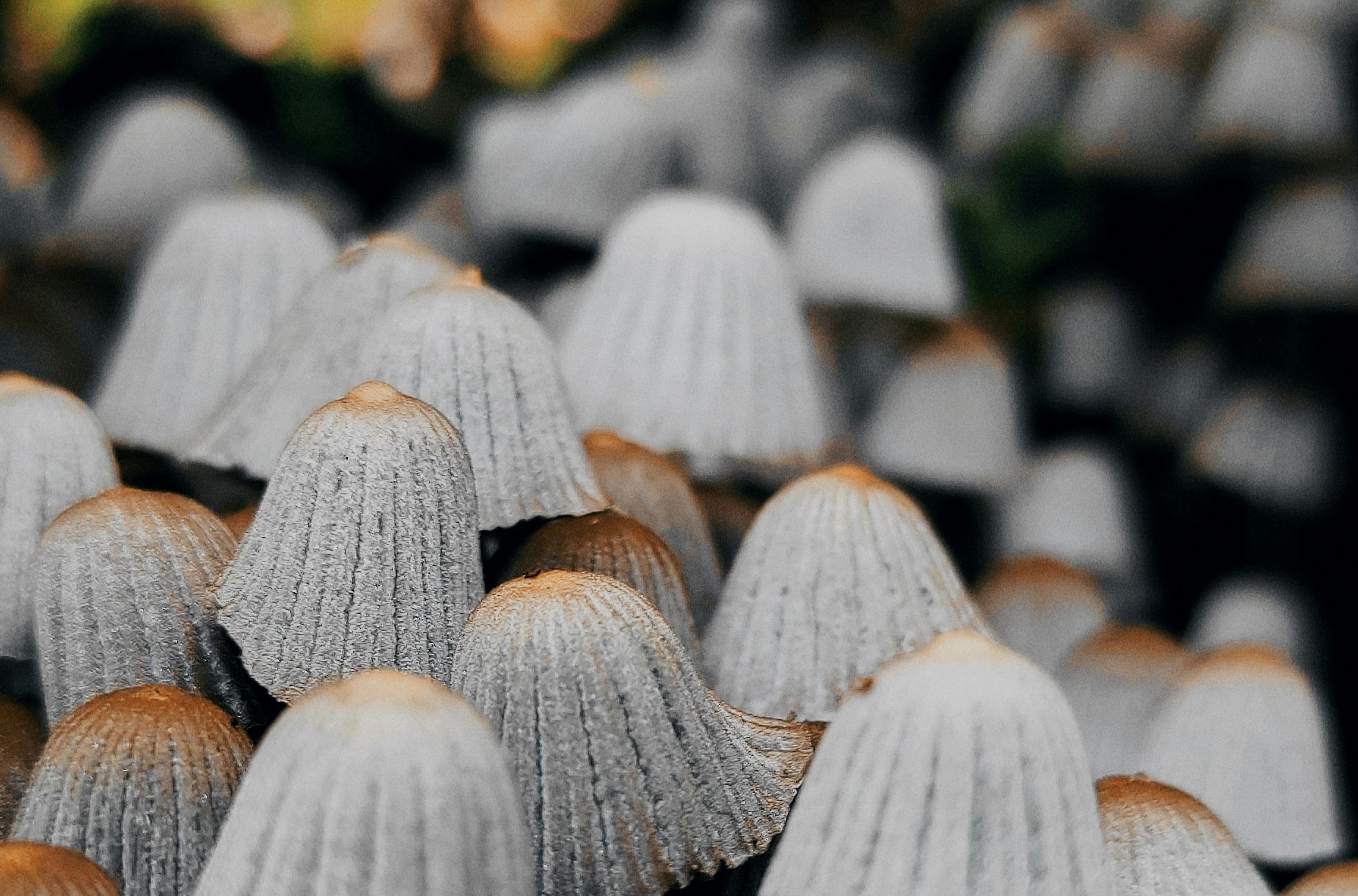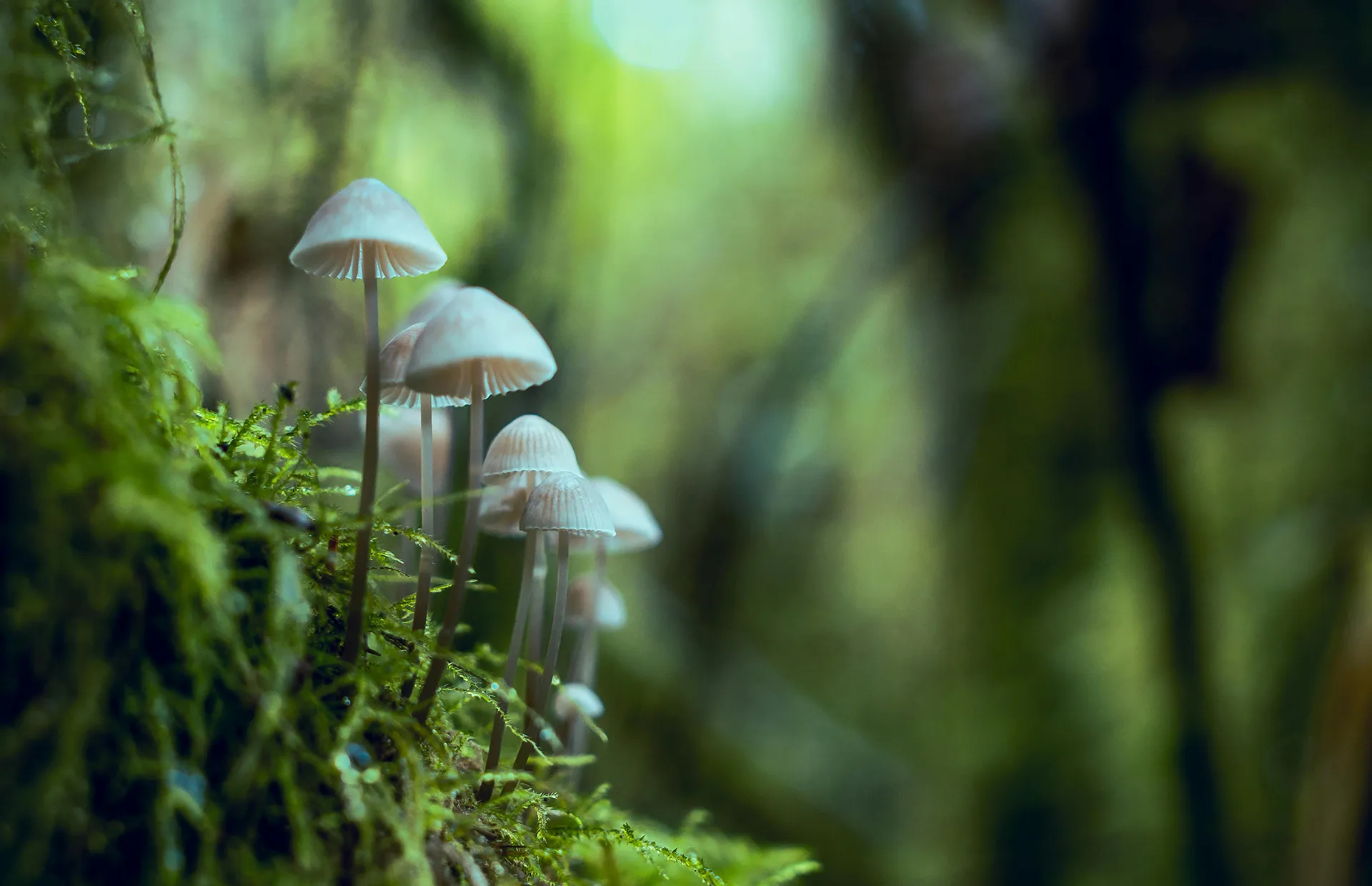The days that mushrooms were just another ingredient for a pizza are officially over. Fungi, as is their group name, and more specifically their underground network of root-like mycelium, are increasingly being recognized for their potential to help emerge an ecological and technological revolution.
The uses of mushrooms are so diverse. Of course we know them as a vegetable replacement and even meat substitute, but you can also make them into sustainable packaging, building material, batteries and even sensors. Fungi with their adaptive nature are an excellent example of how ecology and technology can work together to bring the world innovative solutions.
Mycelium, the vegetative part of a fungus, can be cultivated on agricultural waste such as corn stalks, sawdust, coffee grounds and other by-products of the food industry, making it more sustainable than many other crops. The root-like structure together with the waste grounds form a dense network as it feeds off this bio-waste. Then the moment comes the mushrooms can be harvested, processed, and shaped into a variety of products. The possibilities seem endless. To give you some examples of what fungi can become:
- Mushroom leather, a vegetarian and cruelty-free alternative to animal leather.
- Packaging material, a sustainable alternative to petroleum-based packaging like plastic.
- Building materials, more lightweight and versatile than traditional construction materials. Applications include insulation, soundproofing and even being part of building structures.
- Furniture padding. As mushroom-based padding is very foamy and easy to form in almost any shape.
- Death suits, a biodegradable alternative to caskets without the need for embalming fluids.
- An alternative to shape and even grow electronic components and even circuit boards. The mycelium is used as a substrate in this case and at the end of its life cycle the board can be composted.
- Another use in electronics: fungi as sensors. Mushrooms show great ability to respond to various environmental stimuli, giving them potential application across a variety of sensor types.
- Nature-based batteries. They are made from cellulose nanofibers derived from the cell walls of mushrooms. The cells are being used to replace graphite electrodes in today's lithium ion batteries. The porous structure of the mushroom skin allows for better ion transport.

Natural sensors
From all the mentioned applications, sensors might be the most broad and interesting one. Mushrooms show great potential for use in sensor technology and continued research in this area is needed to develop useful environmentally-friendly tools. The application of such natural sensors opens a world of possibilities. Mushrooms can be used to detect environmental conditions such as humidity, temperature, and light. Their porous structure allows them to absorb and release moisture, making them sensitive to changes in humidity. This is useful to create sensors for the agriculture industry and help with climate control in building automation.
But fungi can also be used as biological sensors to detect specific substances or compounds. For example, researchers have developed biosensors using mushroom cells that can detect heavy metals in water. The mushrooms even change color when these substances are present, providing a visual indication of contamination. That’s a good way to monitor water quality.
Some mushrooms have even been found to be sensitive to certain types of gas, such as methane and carbon dioxide. Those could help researchers creating gas detection sensors for consumers and the industry alike.
The flexible and lightweight nature of mushrooms makes them theoretically suitable for use in wearable sensors. Science is already on a mushroom-based ingredient that can monitor body temperature and humidity in a wearable sensor, making it useful for applications in healthcare and sports.
The future
Right now it seems like the complex inner workings of mycelial networks are acting mostly as a guide to help us develop new ways of designing known, traditional systems, as we see with the sensor technology. Though one day it may lead to inventing new biological-based systems altogether.
Imagine, many applications of fungi may still be unknown to humans, judging from what we have discovered so far. The fact that there are mushrooms that clear oil spills and underground fungal networks that help trees communicate, sure is promising. Have you become a fungi enthusiast? Watch the Netflix documentary ‘Fantastic Fungi’ to learn more about these special organisms.


Comments (0)
Share your thoughts and join the technology debate!
No comments yet
Be the first to share your thoughts!